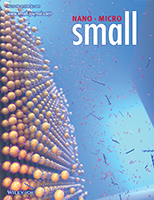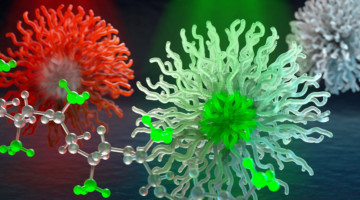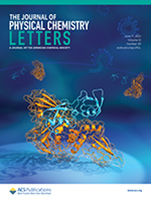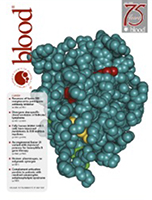With support from ALS data, scientists gained new insight into a semimetal’s unusual electronic behavior. The work lays out a basic strategy for engineering the band structures of semimetallic compounds using dimensional confinement and reveals a new way of creating two-dimensional electron/hole gases by exploiting interfacial bonding. Read more »![]()
![]()
ALS in the News (June 2021)
-
-
-
- Scientists discover how oxygen loss saps a lithium-ion battery’s voltage
- Lights, CAMERA, insights
- Diamond helps discover microscopic metallic particles in the brain
- Neutrons catch shape-shifting coronavirus protein complex in the act
- Key to cleaner combustion? Look to the stars
- Scientists discover new approach to stabilize cathode materials
- Advanced Photon Source helps reveal how antibodies bind a molecule linked to cancer
-
-
Researchers Set Sights on Another COVID-19 Target
Early in the COVID-19 pandemic, it was quickly established that the receptor binding domain (RBD) of the SARS-CoV-2 spike protein is a prime target for neutralizing antibodies. Now, scientists have found a second region of the spike protein that is targeted by dozens of antibodies, some of which exhibit ultrapotent neutralizing activity. Read more »
Rapid In Situ Ligand-Exchange Process Used to Prepare 3D PbSe Nanocrystal Superlattice Infrared Photodetectors
A new strategy for retaining long-range order during ligand exchange of nanocrystal superlattices is used to construct PbSe infrared photodetectors. The ordered photodetectors have a 16× higher responsivity and 2× faster response time compared to disordered ones. Read more »
Label-Free Characterization of Organic Nanocarriers
A technique developed at the ALS enables accurate characterization of organic nanocarriers (molecules that encapsulate other molecules) without the need for disruptive labeling. The method will enable faster, more precise development of exciting new technologies, ranging from targeted drug delivery to oil-spill remediation. Read more »![]()
![]()
Conformational Dynamics in the Interaction of SARS-CoV-2 Papain-like Protease with Human Interferon-Stimulated Gene 15 Protein
The image depicts the complex formed between SARS-CoV-2 papain-like protease and human interferon-stimulated gene 15 protein. Small-angle scattering elucidated the structural details of this complex providing insight into its role in suppressing the innate immune response and also potential routes for development of therapeutics to combat COVID-19. Read more »
Key to Cleaner Combustion? Look to the Stars
Researchers made the first real-time, lab-based measurement of free radicals reacting under cosmic conditions, prompting elementary carbon and hydrogen atoms to coalesce into primal benzene rings. The findings are key to understanding how the universe evolved with the growth of carbon compounds and could also help the car industry make cleaner combustion engines. Read more »
Understanding the Hydrothermal Formation of NaNbO3: Its Full Reaction Scheme and Kinetics
To understand and tune the properties of hydrothermally produced NaNbO3, the reaction was studied in situ with powder x-ray diffraction, small-angle scattering, and total scattering with pair-distribution function analysis. The full reaction scheme and kinetics were revealed, showing two different temperature-dependent growth mechanisms. Read more »
Structure of blood coagulation factor VIII in complex with an anti–C1 domain pathogenic antibody inhibitor
van der Waals sphere representation of the factor VIII C1 domain, highlighting surface‐exposed hemophilia A–associated mutations that cause impaired von Willebrand factor binding and overlap with a pathogenic anti‐C1 domain inhibitor epitope. Read more »
Scientists Uncover a Different Facet of Fuel-Cell Chemistry
Solid oxide fuel cells are a promising technology for cleanly converting chemical energy to electrical energy. To improve the efficiency of these devices, researchers studied a model electrode material in a new way—by exposing a different facet of its crystal structure to oxygen gas at operating pressures and temperatures. Read more »
- « Previous Page
- 1
- …
- 30
- 31
- 32
- 33
- 34
- …
- 83
- Next Page »








